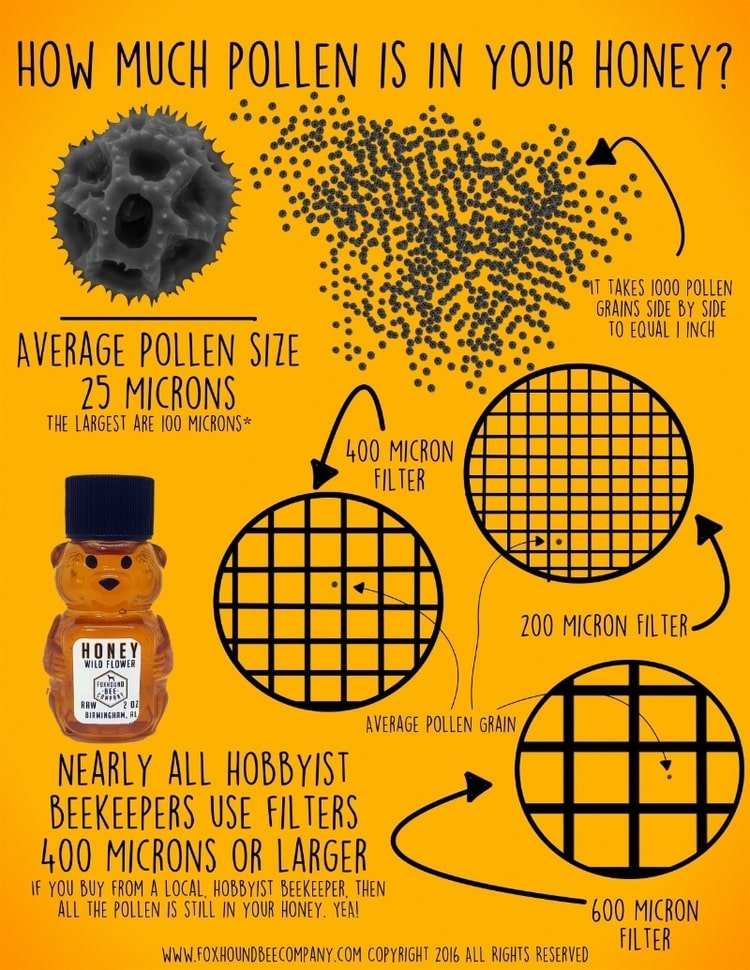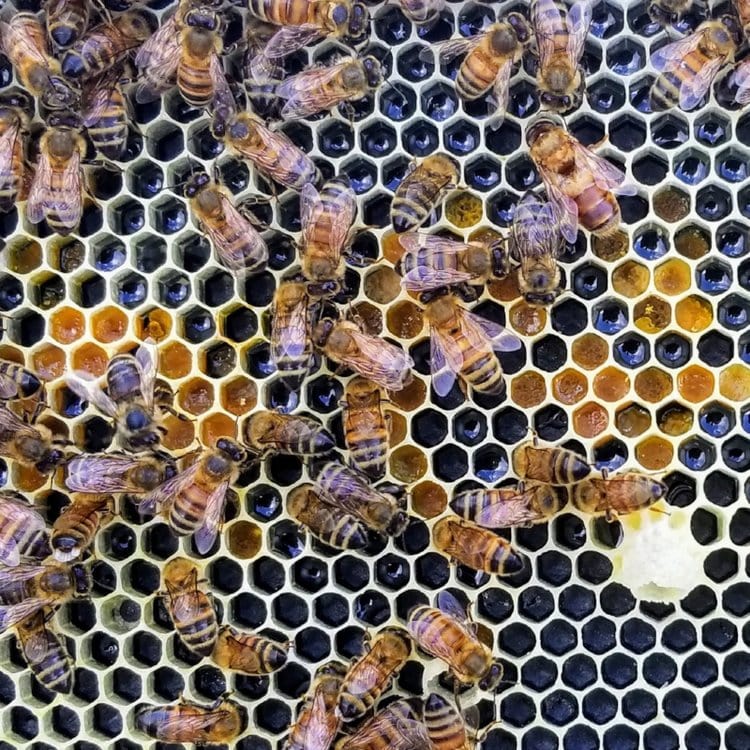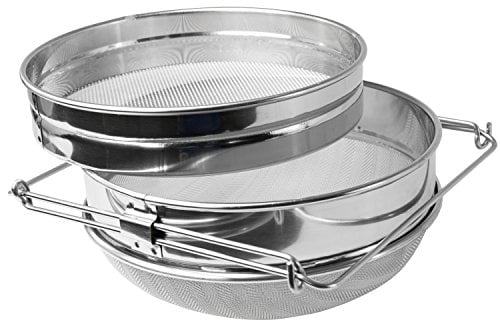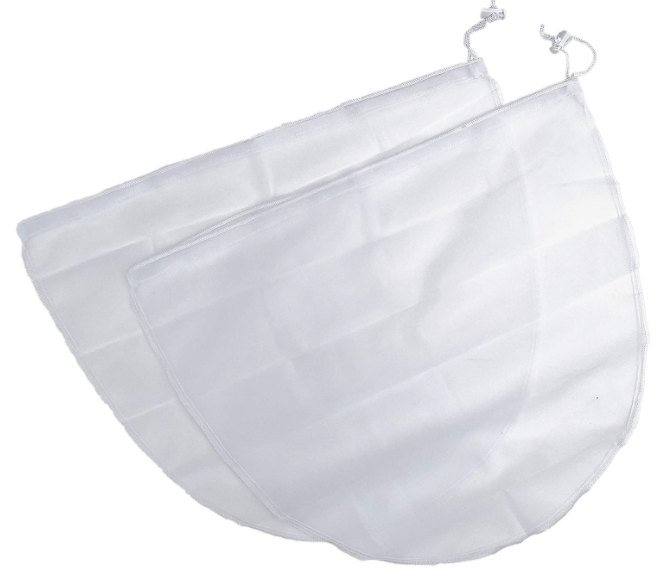


Pollen from different flowers (orange - beige cells) stored in honey comb next to nectar (shiny cells)
Honey bees bounce from flower to flower, pulling nectar and collecting pollen from each flower. Day in and day out, they forage for these ingredients, bringing loads back to the hive. Either on purpose or accidentally, pollen ends up in the stored nectar before it turns into honey.
While harvesting the finished honey, beekeepers will remove wax coverings from each cell and remove the honey. Typically straining the honey before placing it into bottles. While we are talking about honey, make sure you see our popular post about Organic honey and why you should skip buying it.


Pollen from different flowers (orange - beige cells) stored in honey comb next to nectar (shiny cells)
Honey bees bounce from flower to flower, pulling nectar and collecting pollen from each flower. Day in and day out, they forage for these ingredients, bringing loads back to the hive. Either on purpose or accidentally, pollen ends up in the stored nectar before it turns into honey.
While harvesting the finished honey, beekeepers will remove wax coverings from each cell and remove the honey. Typically straining the honey before placing it into bottles. While we are talking about honey, make sure you see our popular post about Organic honey and why you should skip buying it.


Now What Happens To The Pollen In The Honey?
The vast majority of pollen collected by the bees is not mixed with the honey. Bees typically store pollen separate from honey, but some pollen will be mixed with the honey. Beekeepers typically strain bits of comb and bees from honey for appearance sake. Most beekeepers believe using very small filters will exclude the pollen and separate it from the honey.
I believed it for years until I heard an expert, a palynologist, speak on the matter. Dr. Richard Carroll from The University of Alabama, shared some interesting information about pollen.

Now What Happens To The Pollen In The Honey?
The vast majority of pollen collected by the bees is not mixed with the honey. Bees typically store pollen separate from honey, but some pollen will be mixed with the honey. Beekeepers typically strain bits of comb and bees from honey for appearance sake. Most beekeepers believe using very small filters will exclude the pollen and separate it from the honey.
I believed it for years until I heard an expert, a palynologist, speak on the matter. Dr. Richard Carroll from The University of Alabama, shared some interesting information about pollen.

How Much Pollen Is In Your Honey?
The average pollen grain is 25 microns wide, much smaller than the smallest filter a non-commercial beekeeper will have. Filters designed for straining honey for hobby beekeepers come in three sizes, 200 microns, 400 microns, and 600 microns. These numbers represent the size of the tiny holes in each filter.
A 1/4-inch hole is equal to over 6000 microns

How Much Pollen Is In Your Honey?
The average pollen grain is 25 microns wide, much smaller than the smallest filter a non-commercial beekeeper will have. Filters designed for straining honey for hobby beekeepers come in three sizes, 200 microns, 400 microns, and 600 microns. These numbers represent the size of the tiny holes in each filter.
A 1/4-inch hole is equal to over 6000 microns
As an Amazon Associate, Foxhound Bee Company may earn from qualifying purchases
As an Amazon Associate, Foxhound Bee Company may earn from qualifying purchases
